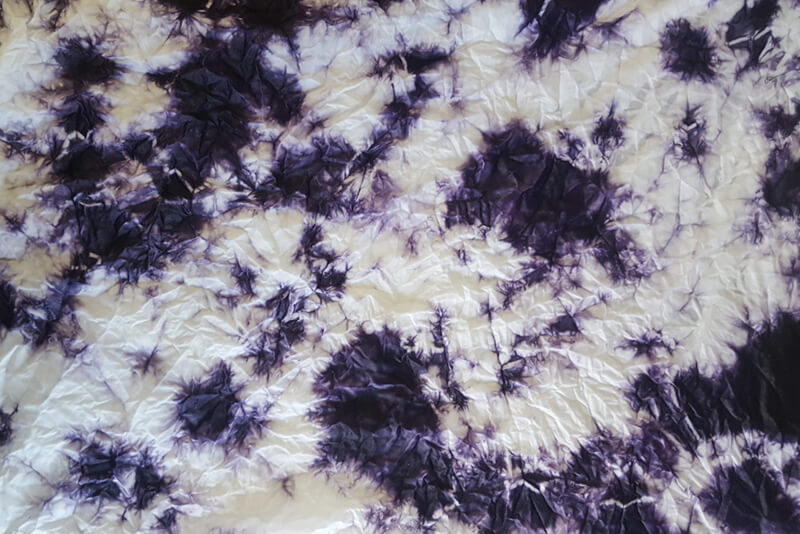These three, easy shibori techniques work best with indigo, but can be used with other natural dyes as well.



With all three techniques, before you begin, prepare your workspace for a messy process. Cover the surface you plan to work on with something you don’t mind getting wet and dirty and wear an apron and gloves.
The Scrunch




Dye your fabric in your dye of choice!
After dyeing, rinse the bundle gently. Then remove the rubber bands and open up the fabric bundle. Rinse again until the water runs clear. Air dry away from direct sunlight.
The Honeycomb
Dampen your fabric and then lay it out on a table or flat surface. If you are using a dye other than indigo, your fabric should already be mordanted.





Dye your fabric in your dye of choice! If you are using something other than indigo, make sure that your bundle is as tightly scrunched and knotted as possible for the best results.
After dyeing, untie the rope and unroll the fabric bundle. If using indigo, wait until all of the dyed parts are oxidized and are blue, not green or yellow. Rinse the fabric until the water runs clear. Air dry away from direct sunlight.
The Spiderweb
Dampen your fabric and then lay it out on a table or flat surface. If you are using a dye other than indigo, your fabric should already be mordanted.





Dye your fabric in your dye of choice!
Remove the rubber bands and open the fabric bundle. If using indigo, wait until all of the dyed parts are oxidized and are blue, not green or yellow. Rinse the fabric until the water runs clear. Air dry away from direct sunlight.
Enjoy trying out these easy shibori techniques and using indigo as well as other natural dyes!
